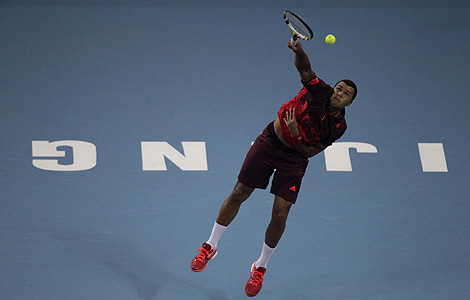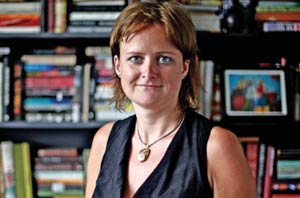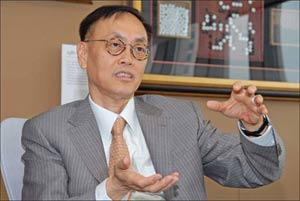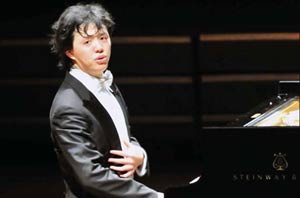Masterpiece in the works
Updated: 2011-10-14 11:26
By Xiao Xiangyi (China Daily European Weekly)
|
|||||||||
|
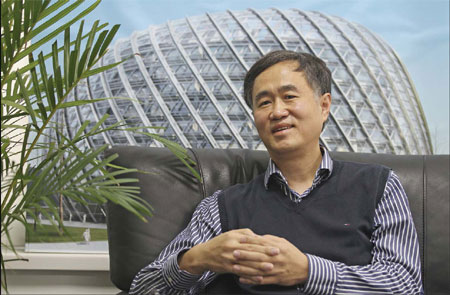 [Shao Weiping says the design of Phoenix International Media Center incorporated technical innovations and the philosophy of Taoism.] Wang Jing / China Daily |
Biad makes waves with phoenix international media center
For Shao Weiping, the nearly completed Phoenix International Media Center in Beijing represents not only a culmination of his 29 years of work as an architect, but a revival of sorts for the Beijing Institute of Architectural Design (BIAD).
The 18,822-sq-m media center, slated for completion next year, has been drawing rave reviews from critics and citizens alike for its innovative design that seemingly weaves metal beams into the form of a curvaceous basket. Many have said the tower, which involved a total investment of 850 million yuan (96.9 million euros, $133.2 million), will be one of the capital's most significant architectural achievements since the Bird's Nest and the Water Cube. Phoenix, a major satellite TV provider, plans to move its programming operations into the center, which will also house other businesses, offices and restaurants.
"The Phoenix Center is like an expansion of the experience I accumulated in the past 30 years," Shao says.
Shao's UFo studio (one of many studios under the control of State-owned BIAD) began designing the center in 2007. The design is based on the Mobius strip, a surface with one side and one boundary named after a German mathematician who created the continuous strip that leaves viewers confused as to where the strip ends or begins, Shao says.
To design the center that sits adjacent to Chaoyang Park, Shao incorporated unique technical innovations and the philosophy of Taoism. He says the connection between architecture and the environment comes first in his designs.
"Architecture should have a growing affinity with cities. We (architects) simply want to respect the environment," Shao says. "That is how architecture coincides with traditional Chinese values, which is, man is an integral part of nature."
Because of the center's intricate shape, each piece of the building had to be designed separately using a concept Shao describes as digitizing architecture. In digitizing each piece of the center, the size, distance and angle of each piece of the structure was calculated using computers. Renowned architects such as Zaha Hadid and Frank Gehry have made their names by, among other things, adopting digital technology in their projects.
"The digitizing feature is the project's highlight, as well as its technical difficulty," Shao says. "We pay a lot of attention to rational technology to make it functional. This is a philosophy of an architect, we don't show off the technology, but we still challenge technology. After all, we have to create something from nothing."
Shao and his UFo team also used building information modeling (BIM) as a more reliable system for designing the project. BIM is the process of designing a structure in 3D.
"Very few architecture design firms in the world can apply BIM well, but it is the trend in contemporary architecture design," Shao says, adding that digitizing and BIM together made the media center a reality.
Growing up in Beijing's traditional courtyards and educated at Shanghai Tongji University, Shao says he has witnessed over his long career the changes in China's architecture design since its reform and opening-up. The path to being chosen to design the Phoenix International Media Center was not an easy one for Shao.
Before designing the media center, he had co-designed Terminal 3 at the Beijing International Airport with Foster + Partners, one of the top firms in the world. The airport terminal was named the "Building of the Year" by the United Kingdom's architecture industry in 2009.
"Terminal 3 was a process that integrated all of my architectural experiences. I learned a lot from Foster's team, especially a mature management of the team for good efficiency," says Shao, who is also BIAD's executive chief architect.
The media center also represents a comeback for BIAD. In recent years, the institute had taken a step back from the domestic design community despite having designed Terminal 3, the sports center at Wukesong, the National Grand Theater and the National Convention Center, all landmarks in Beijing.
The institute has also been involved in nearly every major urban construction project in the capital since 1949, including the designs of Tian'anmen Square, the Great Hall of the People and the Beijing Hotel.
As of late, foreign architects have dominated at least the conceptual designs for major projects in Beijing. Fortunately for the institute, Chinese nationals were given an opportunity in 2007 to submit design ideas for the media center as per Phoenix TV's requirements. Many well-known Chinese architects, such as Ma Qingyun and Ma Yansong, were among the candidates.
Securing the winning design was a major triumph for BIAD, the 60-year-old institute with 29 studios and 1,663 staff members. Many of Shao's colleagues attribute the winning design to Shao's open-mindedness.
"He always keeps in mind the original idea's possibility of completion and that has made him among the rational architects," says Min Shengyong, who studied under Shao for his master's degree.
"Shao is the most open-minded director I've ever met. For example, if he already has come up with an idea and I put forward another one, he will think it over again completely, " says Li Kan, Shao's colleague at BIAD.
Shao, on the other hand, is more modest about his achievement and the new project.
"I am not sure whether it will become a classic, but at least it deserves global attention and discussion," says Shao.



